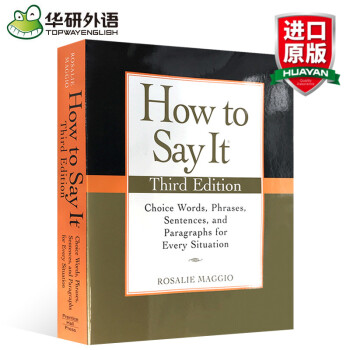

具体描述
书名:How to Say It: Choice Words, Phrases, Sentences & Paragraphs如何表达
作者:Rosalie Maggio
出版社名称:Prentice Hall Press
出版时间:2009
语种:英文
ISBN:9780735204379
商品尺寸:18.7 x 3 x 23.3 cm
包装:平装
页数:576
在英文写作中,选择恰当的词汇、短语及句子很重要。这本How to Say It《如何表达》就各种情境下的书信写作应该写什么、怎么写、以及什么不能写提供了明确、实用的指导。本书涵盖了从商务信函到私人书信等各类日常应用文写作的内容,对于任何想要提高英文写作能力或语言表达能力的人来说都是一本很重要的案头参考书。本书适合广大学生、教师或职场人士使用。
理由:
1.内容全面、,涵盖各种应用文写作,如致歉信和慰问信、致编者信、求职信、募款申请、邀请函和声明等;
2.讲解清晰,从词汇、短语、句子到段落模式都有介绍;
3.第三版,全新修订,提供参考实例、建议、注意事项。
For anyone who has ever stared at a blank page or screen (Kaylene Weiser, organized consultant, the Wiser Way) the revised third edition of the bestseller that offers a crisp, elegant way to say everything. (Vivian Jenkins Nelson, founder, the International Institute for Interracial Interaction)
the exceptional, wonderful, amazing (Vivian Jenkins Nelson, founder, the International Institute for Interracial Interaction) book that has sold nearly one million copies!
How to Say It® provides clear and practical guidance for what to say—and what not to say—in any situation. Covering everything from business correspondence to personal letters, this is the perfect desk reference for anyone who often finds themselves struggling to find those perfect words for:
·Apologies and sympathy letters
·Letters to the editor
·Cover letters
·Fundraising requests
·Social correspondence, including invitations and Announcements
This new edition features expanded advice for personal and business emails, blogs, and international communication.
For the past two decades. How to Say It has been the go-to resource for millions of people struggling to find those perfect words. Now fully revised with hundreds of new examples covering everything from business correspondences, holiday letters, and apologies to contracts, invitations, and condolence notes. How to Say It offers expert tips and advice on what to say—and what not to say—in any situation.
How to Say It《如何表达》就各种情境下应该说什么——以及不应该说什么——提供了的指导和建议。新版本全面修订了数百新的例子,包括商务信函、假期信件、道歉信、合同、请柬和吊唁便条等。
罗莎莉·马吉欧是出版18本书籍的获奖作者。她是美国作家协会(Authors Guild)和美国童书作家与插画家协会(Society for Children’s Book Writers and Illustrators)的成员。
Rosalie Maggiois the award-winning author of eighteen books. She is a member of the Authors Guild and the Society for Children’s Book Writers and Illustrators.
Title Page
Copyright Page
Dedication
Acknowledgements
Introduction
One - Acceptances
Two - Acknowledgments and Confirmations
Three - Letters of Adjustment
Four - Advice
Five - Anniversaries and Birthdays
Six - Announcements
Seven - Apologies
Eight - Letters of Application
Nine - Appointments and Interviews
Ten - Letters of Appreciation
Eleven - Belated Letters
Twelve - Collection Letters
Thirteen - Complaints
Fourteen - Congratulations
Fifteen - Letters That Serve As Contracts
Sixteen - Cover Letters
Seventeen - Letters About Credit
Eighteen - Letters of Disagreement
Nineteen - Letters to the Editor
Twenty - E-Mail
Twenty-One - Letters Dealing With Employment
Twenty-Two - Letters to Family and Friends
Twenty-Three - Faxed Letters
Twenty-Four - Follow-Up Letters
Twenty-Five - Fundraising Letters
Twenty-Six - “Get Well” Letters
Twenty-Seven - Goodwill Letters
Twenty-Eight - Holiday Letters
Twenty-Nine - Letters of Instruction
Thirty - Letters of Introduction
Thirty-One - Invitations
Thirty-Two - Love Letters
Thirty-Three - Memos
Thirty-Four - Letters to Neighbors
Thirty-Five - Letters Dealing With Orders
Thirty-Six - Letters Related to Organizations and Clubs
Thirty-Seven - Query Letters
Thirty-Eight - References and Recommendations
Thirty-Nine - Refusals
Forty - Reports and Proposals
Forty-One - Requests and Inquiries
Forty-Two - Responses
Forty-Three - Résumés
Forty-Four - Sales Letters
Forty-Five - Sensitive Letters
Forty-Six - Letters of Sympathy
Forty-Seven - Thank-You Letters
Forty-Eight - Letters Related to Travel
Forty-Nine - Wedding Correspondence
Fifty - Letters of Welcome
Appendix I - Mechanics
Appendix II - Content
Index
Once you decide to accept an invitation or grant a request, simply say so; this is one of the easiest letters to write.
A yes that doesn’t come from the heart results in an unenthusiastic acceptance and you may even find yourself backing out later. Writing the acceptance is not as difficult as being sure you want to say yes in the first place.
Write Acceptances for
•admissions requests: schools/clubs/organizations
•franchise applications
•invitations: dinner/meeting/party/luncheon/hospitality
•job offers
•membership offers: board/commission/organization
•proposals
•requests: contributions/favors/help
•speaking invitations: conference/workshop/banquet
•wedding invitations (see WEDDINGS)
How to Say It
•Express your pleasure in accepting the invitation/offer/proposal/bid or agreeing to do what was asked.
•Repeat the details of what you are accepting (meeting date and time, amount of the bid or of your contribution, the precise nature of your assistance, the duties you agree to assume).
•Inquire about particular needs: receipt for a tax-deductible contribution, directions to your host’s home, wheelchair accessibility, equipment for your speech, list of other organizers.
•Close with an expression of pleasure to come (seeing the person, working for the company, being part of the group) or of future action (what you want to accomplish, actions you intend to take, a reciprocal invitation).
What Not to Say
•Avoid ungracious amplifications: you are busy but you suppose you can manage it; you have two other events on the calendar that evening but you will try to stop by; you probably won’t be a good speaker but, sure, you’ll try. Let your yes be a simple yes. If you have reservations about your acceptance, it may be better to decline.
Tips on Writing
•Send acceptances as soon as possible. If you are late, apologize, but do not dwell on it.
•Acceptances are brief and generally deal only with the acceptance.
•Noted usage expert Rudolf Flesch says, “If your answer to an inquiry is yes, it’s a good idea to make yes the first word of your letter.”
•Be enthusiastic. It is entirely proper to simply state your acceptance and repeat the details of the invitation, but your stock with hosts, employers, or friends will go up if you add a sentence saying something personal, cheerful, or lively.
•When your invitation is issued in the name of more than one person, mention all of them in your reply. Mail your reply either to the person listed under the RSVP or to the first name given.
•Always respond promptly to an invitation marked “RSVP” or “Please reply.” This is mandatory, obligatory, required, compulsory, imperative, and essential.
Special Situations
•When offered a position you want, write an acceptance letter that expresses your enthusiasm and pleasure and that confirms the details of your employment.
•When writing to offer a job to an applicant, include: a congratulatory remark about being chosen and something complimentary about the person’s credentials, experience, or interview; information about the job—duties, salary, supervisor’s name, starting date; the name and telephone number of someone who can answer questions; an expression of goodwill about the person’s employment with the company. Highlight some of the advantages of working for the company to influence the person’s decision to accept the offer.
•In some situations (large weddings, for example), one of a couple may accept an invitation while the other declines. In other cases (large dinner parties), check with your host to see if this is acceptable.
•White House invitations include the phone number of the Social office where you telephone your acceptance and can ask questions about protocol, where to park your car, what to wear, how to respond to the invitation. General guidelines are: send your reply within a day of receiving the invitation; write the reply yourself (do not have a secretary do it); handwrite your reply on plain or engraved personal stationery; use the same format and person (first person or third person) to reply but insert “have the honor of accepting”; if the invitation was sent by the President’s or First Lady’s secretary (in the case of an informal invitation), reply to that person and write “Would you please tell/convey to...”
•Children can write brief acceptances for invitations: “Thank you for inviting me to your Halloween party. Wait till you see my costume!”
Format
•Model your reply on the format used in the invitation or letter. If it is handwritten, handwrite your reply. If letterhead stationery is used, reply on your letterhead. If the invitation is e-mailed, e-mail your acceptance. When the language of the invitation is informal, your reply is also informal. When replying to a formal invitation, use nearly the same words, layout, and style as the invitation:
Mr. and Mrs. Masterson Finsbury
request the pleasure of
Mr. and Mrs. Edward Bloomfield’s company
at a dinner-dance
on Saturday, the seventh of February
at eight o’clock
Gideon Country Club
Mr. and Mrs. Edward Bloomfield
accept with pleasure
the kind invitation of
Mr. and Mrs. Masterson Finsbury
to a dinner-dance
on Saturday, the seventh of February
at eight o’clock
Gideon Country Club
SENTENCES
After reviewing your application, we are pleased to be able to offer you the funding requested.
I accept with pleasure the position of senior research chemist.
I am happy to be able to do this.
I appreciate very much (and accept) your generous apology.
I’ll be happy to meet with you in your office March 11 at 10:30 to plan this year’s All-City Science Fair.
In a word, absolutely!
In response to your letter asking for support for the Foscari Children’s Home, I’m enclosing a check for $500.
Thank you for inviting me to speak at the Chang-Ch’un Meditation Center next month.
We accept your kind invitation with great pleasure.
We are happy to accept your estimate for refinishing our Queen Anne dining room suite.
We are pleased to grant you the six-week extension you requested to complete your work.
We are pleased to tell you that your application for admission to the Emmet School has been approved.
We look forward to working with you.
用户评价
这本书的语言风格非常接地气,完全没有学术论文那种高高在上的距离感。作者在讲解复杂的写作技巧时,所使用的词汇和句式都非常平易近人,仿佛是在和一位经验丰富的同事进行一次深入的交流。最让我欣赏的一点是,它在示范如何构建句子和段落时,并没有采用那些生硬的、教科书式的范例,而是大量融入了我们在日常商务沟通中真实会遇到的对话情景。举例来说,在讲解如何写“有说服力的论述”时,它不是简单地罗列了逻辑连接词,而是提供了一系列将抽象观点转化为具体、有画面感陈述的步骤。比如,它会展示一个从“模糊的断言”到“强有力的主张”的递进过程,每一步都配有清晰的英文示范。这种渐进式的学习路径,极大地降低了掌握高难度写作技巧的心理门槛。它让我感觉,写出地道、有力的英文信函和报告,不再是遥不可及的目标,而是一套可以通过遵循清晰步骤就能达成的技能。我发现自己开始不再仅仅关注单词的正确性,而是更加注重整个篇章的流畅性和逻辑的严密性,这是一种质的飞跃。
评分我记得我第一次打开这本书时,最让我感到惊喜的是它在结构组织上的巧妙设计。它不像我之前看过的很多同类书籍那样,堆砌着大量的规则和例句,而是似乎构建了一个非常清晰的“问题导向型”的知识地图。我习惯于在遇到具体写作场景时,能够迅速找到对应的解决方案,而不是从头到尾地啃完一整本书。这本书似乎深谙此道。它的目录设计就非常直观,仿佛是一个可以随时查阅的工具箱。我试着寻找了一些我平时最头疼的场景,比如如何用得体的措辞拒绝一个合作请求,或者如何写一封既礼貌又坚定的催款邮件。令人惊叹的是,我几乎是瞬间就定位到了相关的章节。而且,每一个情景的解析都不是单一的模板,而是提供了多种语气的选择——正式、半正式、非正式,并且详细解释了每一种语气适用于何种社交或商业情境。这种层次感和灵活性,对于一个追求精准表达的作者来说,简直是福音。它教的不仅仅是“写什么”,更是“如何根据听众和目的来调整你的表达方式”。这种注重语境和交际策略的讲解方式,远超出了普通写作指导书的范畴,更像是一位资深外籍编辑在身边手把手地指导你修改草稿。
评分这本书的价值评估,最终要落脚于它是否能真正改变读者的产出质量。对我而言,这本书起到的作用更像是一个“能力重塑者”。在使用它提供的框架和指导进行几次实际写作后,我明显感觉到自己对英文书面语的“语感”得到了极大的提升。过去,我写完一封重要的英文邮件后,总会忐忑不安地请同事帮忙校对,总担心自己的表达方式不够地道或冒犯到收件人。而现在,在运用了书中关于“Tone Setting”(语气设定)和“Audience Awareness”(受众意识)的原则后,我的自信心有了显著的增强。我不再是单纯地在翻译脑子里的中文想法,而是能够更自然地直接用英文的逻辑和表达习惯来构建信息。这种从“翻译者”到“原生作者”的心态转变,是任何一本只停留在罗列语法点的书所无法给予的。这本书提供的,是一种内化的写作思维模式,它教会你如何像一个经验丰富的英文使用者那样去思考和组织文字,其长期价值远超出了单纯的应试或短期任务完成。
评分与其他强调“一招鲜吃遍天”的写作指南不同,这本书真正展现了其“实用”二字的深层含义——它关注的是“应用”的广泛性。它似乎涵盖了从最基础的自我介绍信函到最高阶的提案总结报告的方方面面。我特别注意到它对“非正式沟通”的处理,这往往是很多传统教材忽略的盲区。如今,随着即时通讯工具在工作中的普及,如何用简洁、得体的英文快速回复一封简短的询问邮件,或者在团队内部的协作文档中清晰地传达信息,变得至关重要。这本书专门开辟了章节来讨论这类“快节奏”的写作需求,提供了大量可以即时复制粘贴并根据需要微调的短句和框架。这种对现代工作场景的敏锐捕捉和及时反馈,使得这本书的价值在数字化办公环境中得到了极大的提升。它不只是教你写长篇大论,更教你如何高效地进行日常的文字交流。这对于我们这些需要同时处理多项任务的职场人士来说,无疑是极大的效率助推器。
评分这本书的封面设计实在是太抓人眼球了,那种简洁又不失专业感的排版,一下子就让我对它产生了浓厚的兴趣。我是一个非常注重书籍“第一印象”的人,而《英文原版实用英语作文书 How to Say It 英文写作应用文书信》在这方面做得无可挑剔。拿到手里,首先感受到的是纸张的质感,厚实而细腻,即使用荧光笔做标记,也不会有墨水洇开的烦恼。内页的字体选择非常人性化,大小适中,行间距也处理得恰到好处,即便是长时间阅读,眼睛也不会感到明显的疲劳。这种对细节的打磨,体现了出版方对读者的尊重。更不用说,书名本身就清晰地定位了它的核心价值——实用性。作为一个在职场上经常需要撰写英文邮件和报告的人来说,我需要的不是那些空泛的语法理论,而是能够立刻上手、解决实际问题的工具书。这本书的定位精准地戳中了我的痛点,让我相信它内部的内容必然是经过精心筛选和编排的。从排版风格上来看,它似乎摒弃了传统教材那种枯燥乏味的布局,转而采用了一种更接近现代工作手册的布局,这一点非常符合当代读者的阅读习惯和审美追求。它的视觉引导性很强,似乎每翻开一页,都能清晰地知道这个部分是用来解决哪一类写作难题的。这种对实用价值的视觉化呈现,极大地提升了我想要立刻深入研读的欲望。
相关图书
本站所有内容均为互联网搜索引擎提供的公开搜索信息,本站不存储任何数据与内容,任何内容与数据均与本站无关,如有需要请联系相关搜索引擎包括但不限于百度,google,bing,sogou 等
© 2025 book.coffeedeals.club All Rights Reserved. 静流书站 版权所有


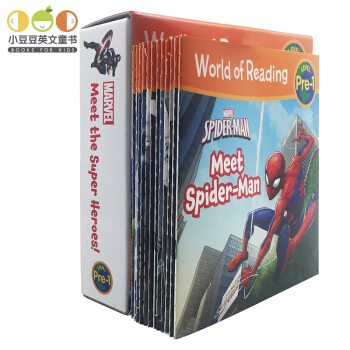
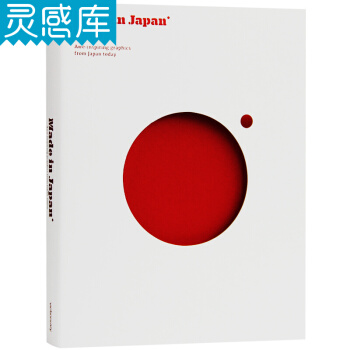
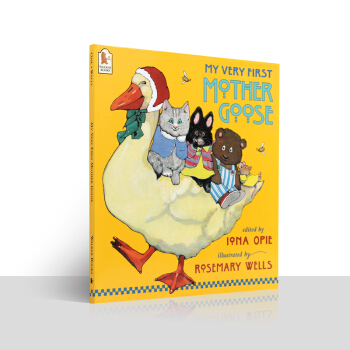
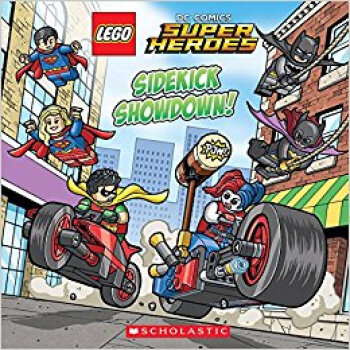
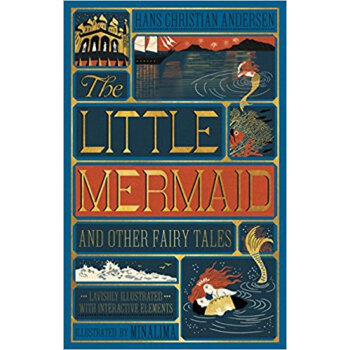
![Cambridge Dictionary of American English (2nd Edition) 剑桥美国英语词典 英文原版 [平装] pdf epub mobi 电子书 下载](https://pic.windowsfront.com/19000795/rBEhWFMW64wIAAAAAABWnBNjB4AAAJfGQIETD8AAFa0569.jpg)
![Two Bad Ants [精装] [4岁及以上] pdf epub mobi 电子书 下载](https://pic.windowsfront.com/19021697/9387090e-d1d3-405c-a15e-cbd98c06f319.jpg)
![The J.R.R. Tolkien Audio Collection [Audio CD][J.R.R.托尔金有声合集] [平装] pdf epub mobi 电子书 下载](https://pic.windowsfront.com/19104324/550fa7feN1fc439ab.jpg)
![What I Wish I Knew When I Was 20 [精装] pdf epub mobi 电子书 下载](https://pic.windowsfront.com/19106887/550bee81N65a9bdd5.jpg)
![Henry James Literary Criticism 英文原版 [平装] pdf epub mobi 电子书 下载](https://pic.windowsfront.com/19132784/rBEIDE-9_iIIAAAAAAEoOoaQCL4AAAI8gJHmjgAAShS932.jpg)
![John DOS Passos [精装] [18--UP] pdf epub mobi 电子书 下载](https://pic.windowsfront.com/19132923/59da2953-ae43-4824-bd51-39859c25db6a.jpg)
![QBQ! The Question behind the Question: Practicing Personal Accountability at Work and in Life [精装] pdf epub mobi 电子书 下载](https://pic.windowsfront.com/19134163/rBEQWVFrsa0IAAAAAAS8CuHnHVMAAEJbQDIBMsABLwi400.jpg)
![Mastering the Art of French Cooking: Vol.1 [精装] pdf epub mobi 电子书 下载](https://pic.windowsfront.com/19230704/e7bcb6e2-c450-4ab1-8725-d63e8b7cbf95.jpg)
![Persuasion (Penguin English Library)[劝导] [平装] pdf epub mobi 电子书 下载](https://pic.windowsfront.com/19279104/rBEQYFGI0tcIAAAAAAMt0cKzg5oAAAi-gCh6IUAAy3p319.jpg)
![Discover Germany (Lonely Planet Discover Country) 孤独星球:发现德国 [平装] pdf epub mobi 电子书 下载](https://pic.windowsfront.com/19281576/rBEQYFGDbegIAAAAAACfdCtz-MoAAAPyAOFpBkAAJ-M324.jpg)
![The Chronicles of Narnia Box Set (Books 1 to 7) 纳尼亚全集 [精装] [8岁及以上] pdf epub mobi 电子书 下载](https://pic.windowsfront.com/19287129/550fa63eNa9ff91c3.jpg)
![Encyclopedia Prehistorica Sharks and Other Sea Monsters: The Definitive Pop-Up [精装] pdf epub mobi 电子书 下载](https://pic.windowsfront.com/19290237/rBEhU1JbdDkIAAAAAABc6fv8vGMAAEGxgIl39MAAF0B442.jpg)
![Your Inner Fish: A Journey into the 3.5-Billion-Year History of the Human Body [平装] pdf epub mobi 电子书 下载](https://pic.windowsfront.com/19293747/rBEhVFJYJn0IAAAAAABaA-epP9cAAECagJSC3gAAFob906.jpg)
![The Prequel Trilogy: Star Wars 英文原版 [平装] pdf epub mobi 电子书 下载](https://pic.windowsfront.com/19294915/rBEhU1JU0AwIAAAAAABQjCNEnuIAAD61ADIf3IAAFCk497.jpg)